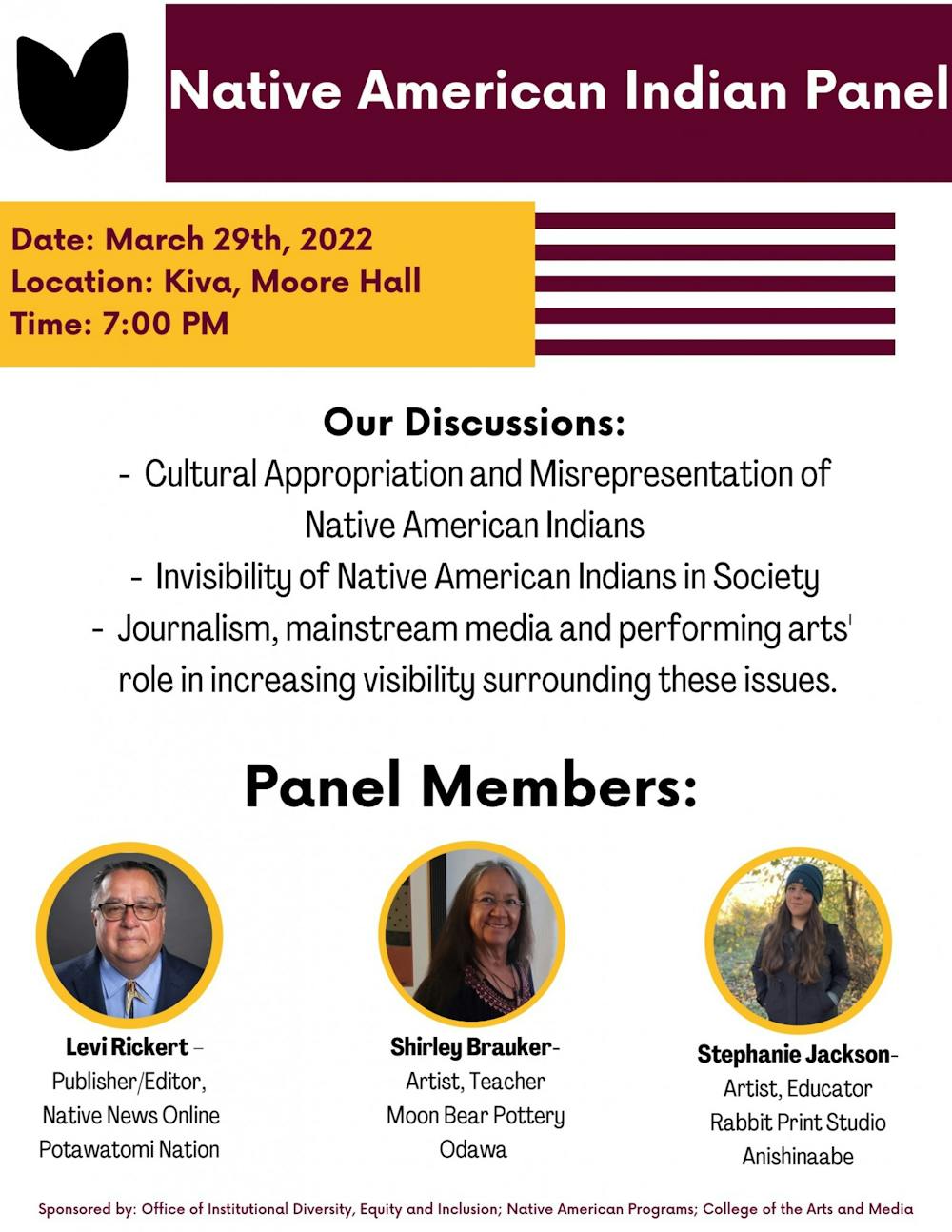Native American panel covers stereotypes, respecting native culture
A Native American Indian Panel covered cultural appropriation, invisibility of indigenous people in media and the lasting effects of the Mount Pleasant boarding school in Moore Hall on March 29.
The panel was moderated by publisher and editor of Native News Online, Levi Rickert, artist and teacher Shirley Brauker and artist and educator, Stephanie Jackson. Rickert is from the Potawatomi Nation tribe, Brauker is from the Odawa tribe and Jackson is from the Anishinaabe tribe.
“Up until 1978, it was illegal for Native Americans to wear their own headdress, because we didn't have the American Indian Religious Freedom Act. It was illegal for you to practice your own native spirituality. That's wild," Jackson said. "So, that is kind of an extra slap in the face, when we now have other cultures, wearing these items that we would have been sent to jail for that we would have had legal repercussions for it. It's very upsetting."
Panelists discussed ways for the campus community to be respectful of native culture, especially during Central Michigan University homecoming. Face paint was at the center of the conversation.
Jackson shared a picture of an indigenous woman protesting at Standing Rock, with pepper spray on her face, representing war paint. She said students at CMU using face paint creates a mockery of that especially because going to war - and using the war paint - was not something people wanted to do.
Another topic of discussion was the Mount Pleasant Indian Industrial Boarding School, established in 1891 by an act of the United States Congress.
Panelists said the boarding school stripped 12,000 students of their clothing, identity and culture. Brauker said her grandpa was a student at the boarding school.
"He ran away and was caught," she said. "I wish back then I had written more stuff down and asked more questions so I could discuss them today.”
Jackson said the traumatic effects of the boarding school are still present today.
“You don't just look at our historical photos and say, 'Oh, yeah, I like that so now I'm going to make a million dollars off of it'," she said. "The profits is what is kind of the salt in the wound, the fact that on top of appropriating us, now you're profiting off of that sort of trauma. That's just not right."
Rickert said Native Americans are rarely covered in journalism and when they are, it usually perpetuates negative stereotypes.
“You only cover us if we’re fighting," he said. "You write about drunk indians, poor indians, you write about only the negative side of being native. Every once in a while we get a story about a casino,” Rickert said.
The panel was sponsored by the Office of Institutional Diversity, Equity and Inclusion, Native American Programs and the College of Arts and Media.




